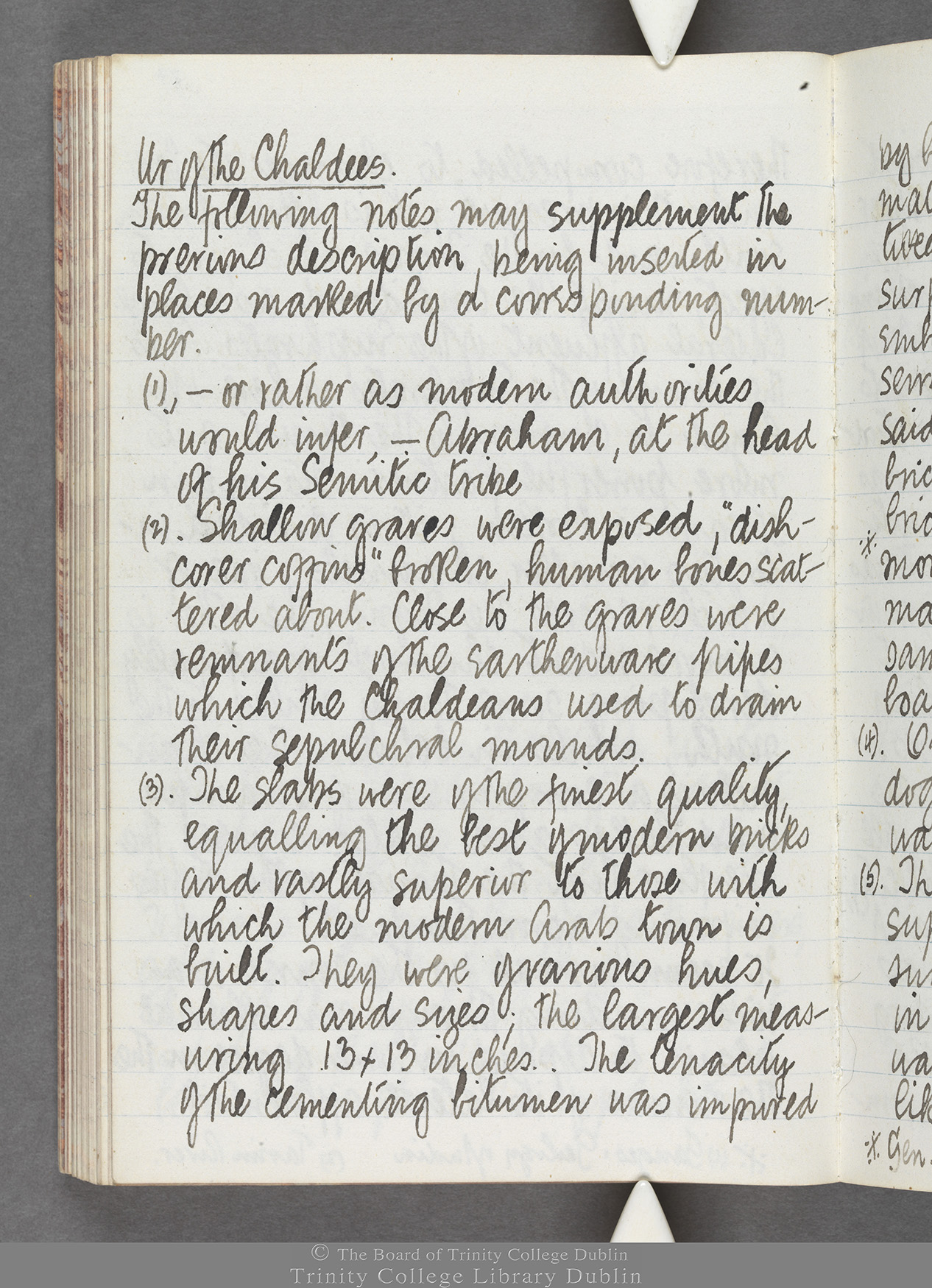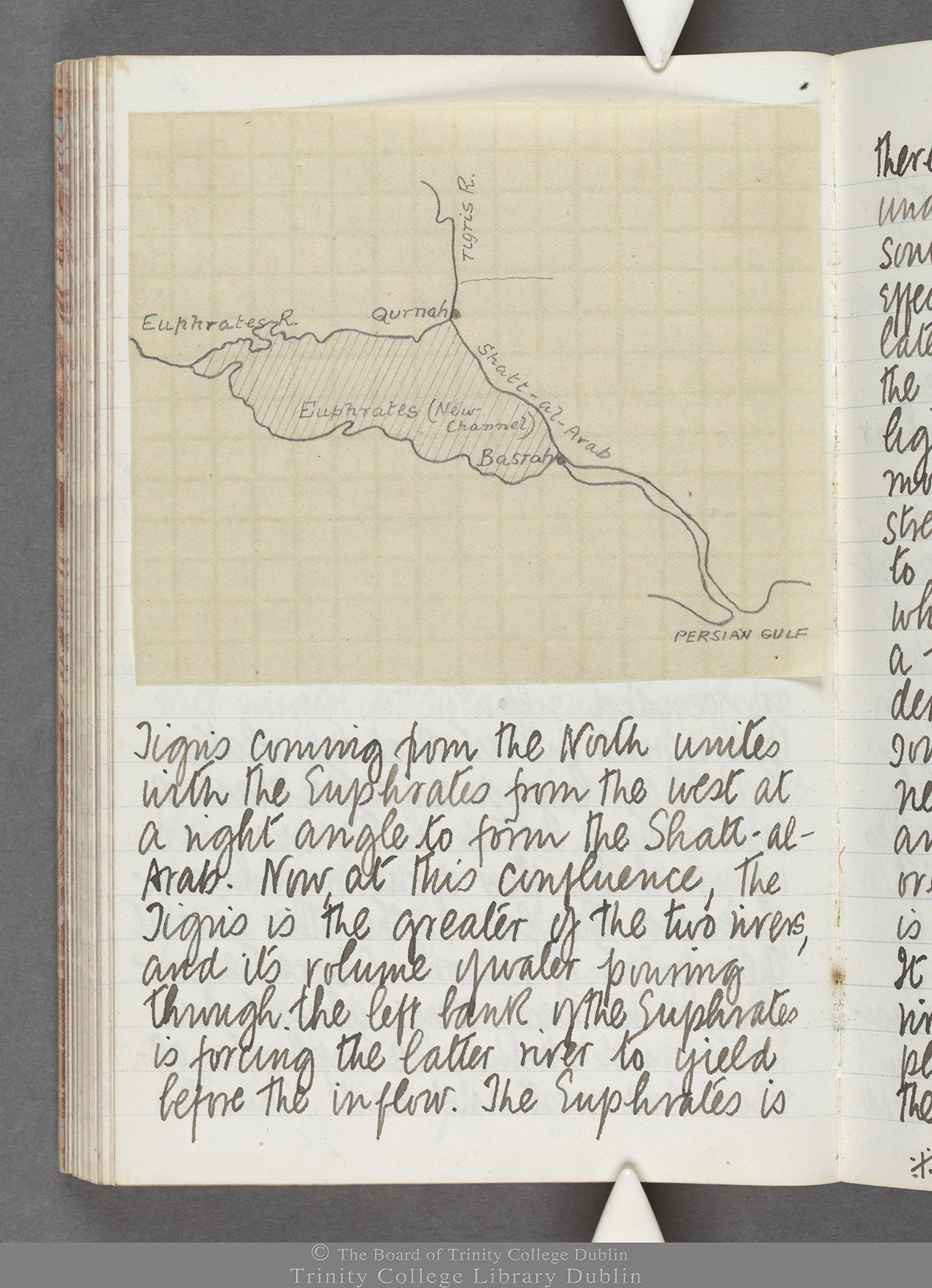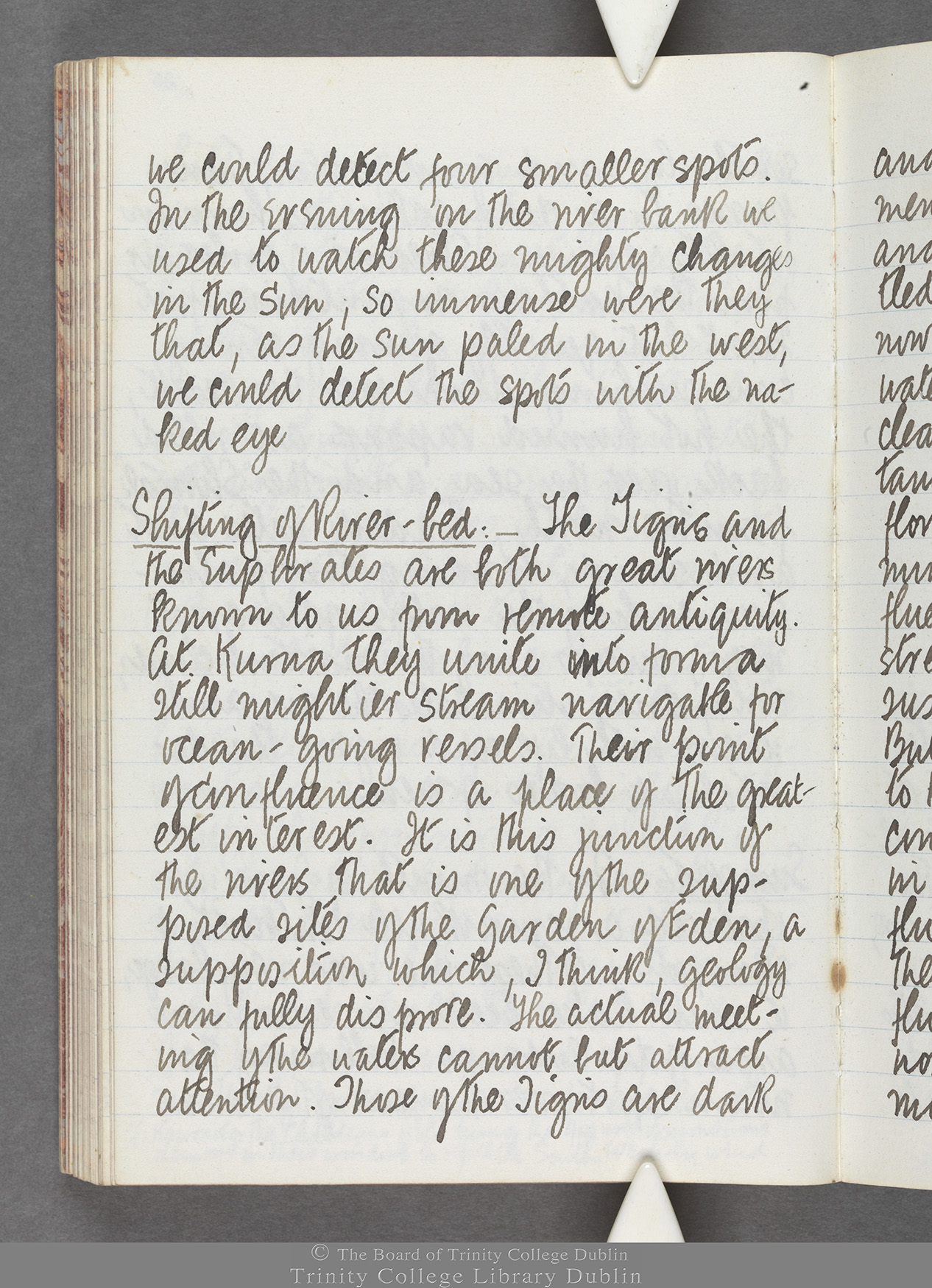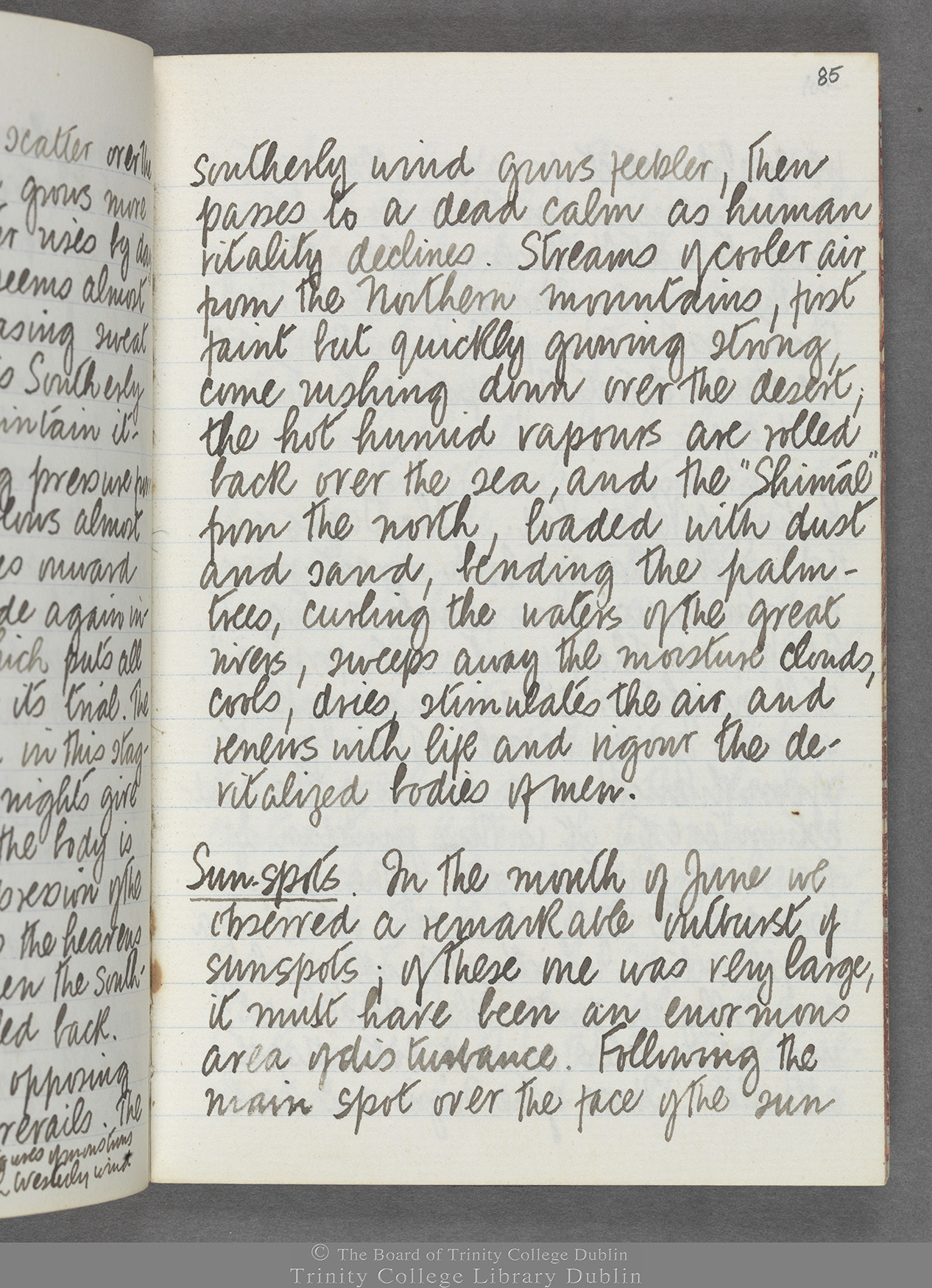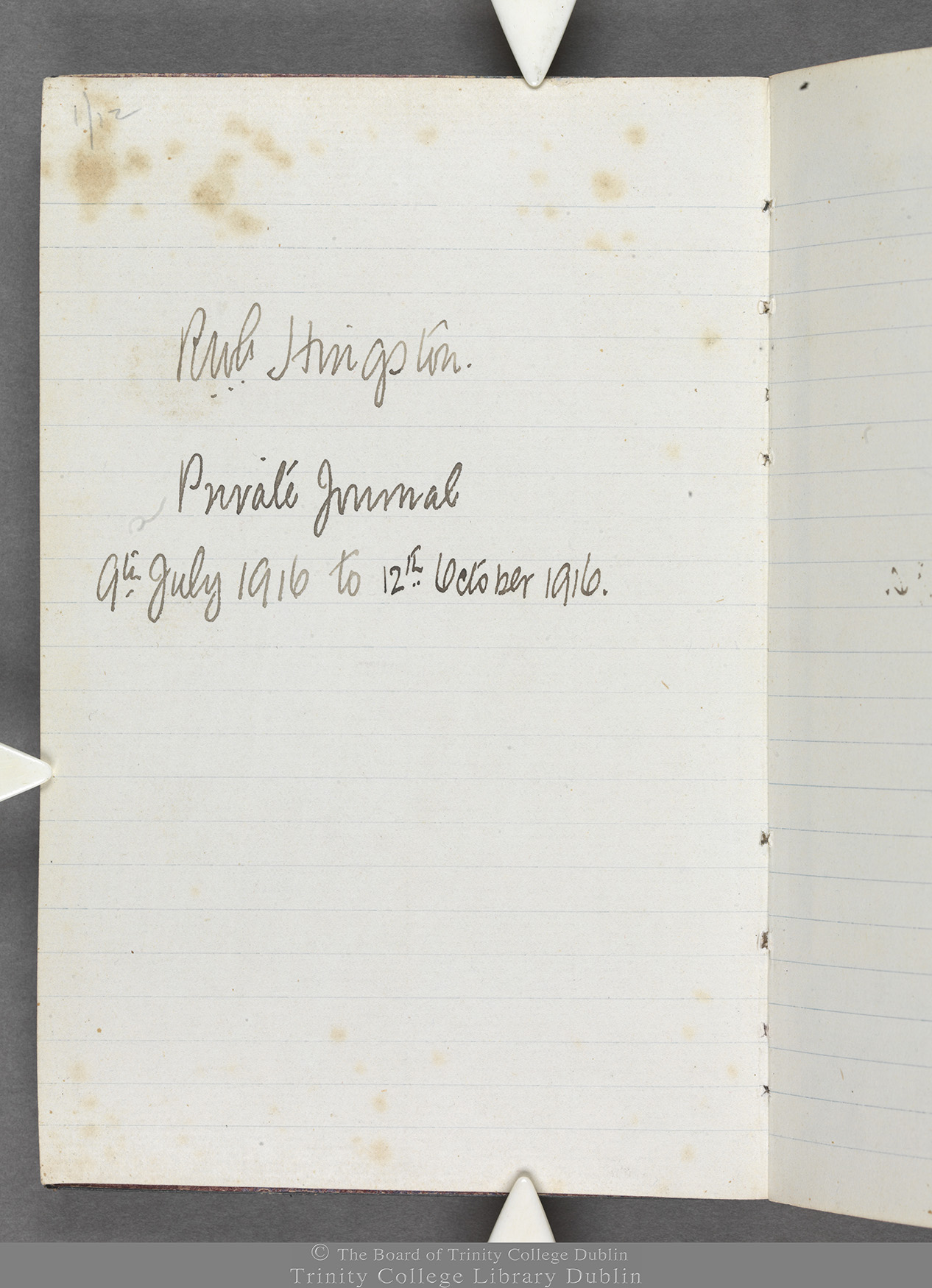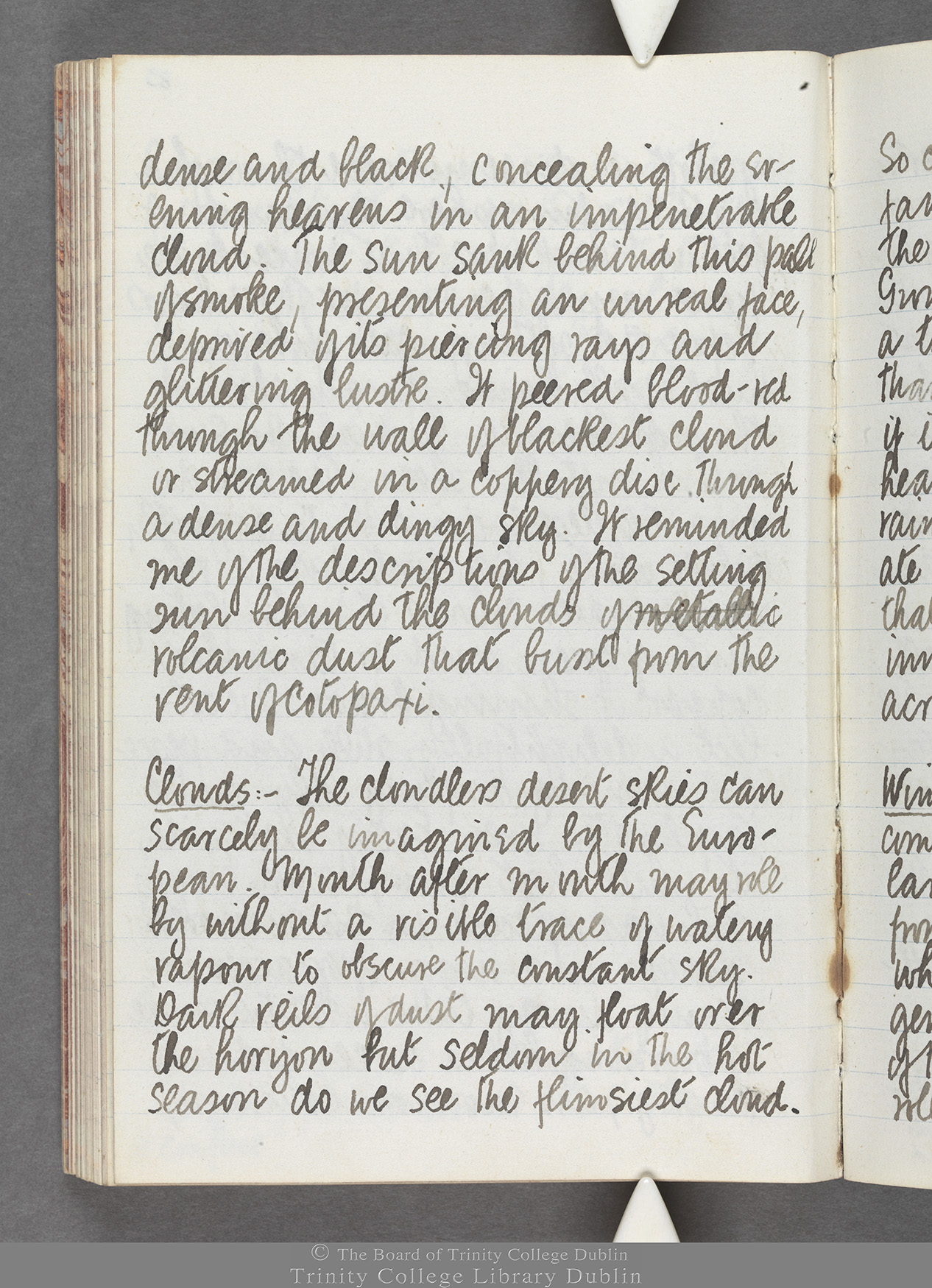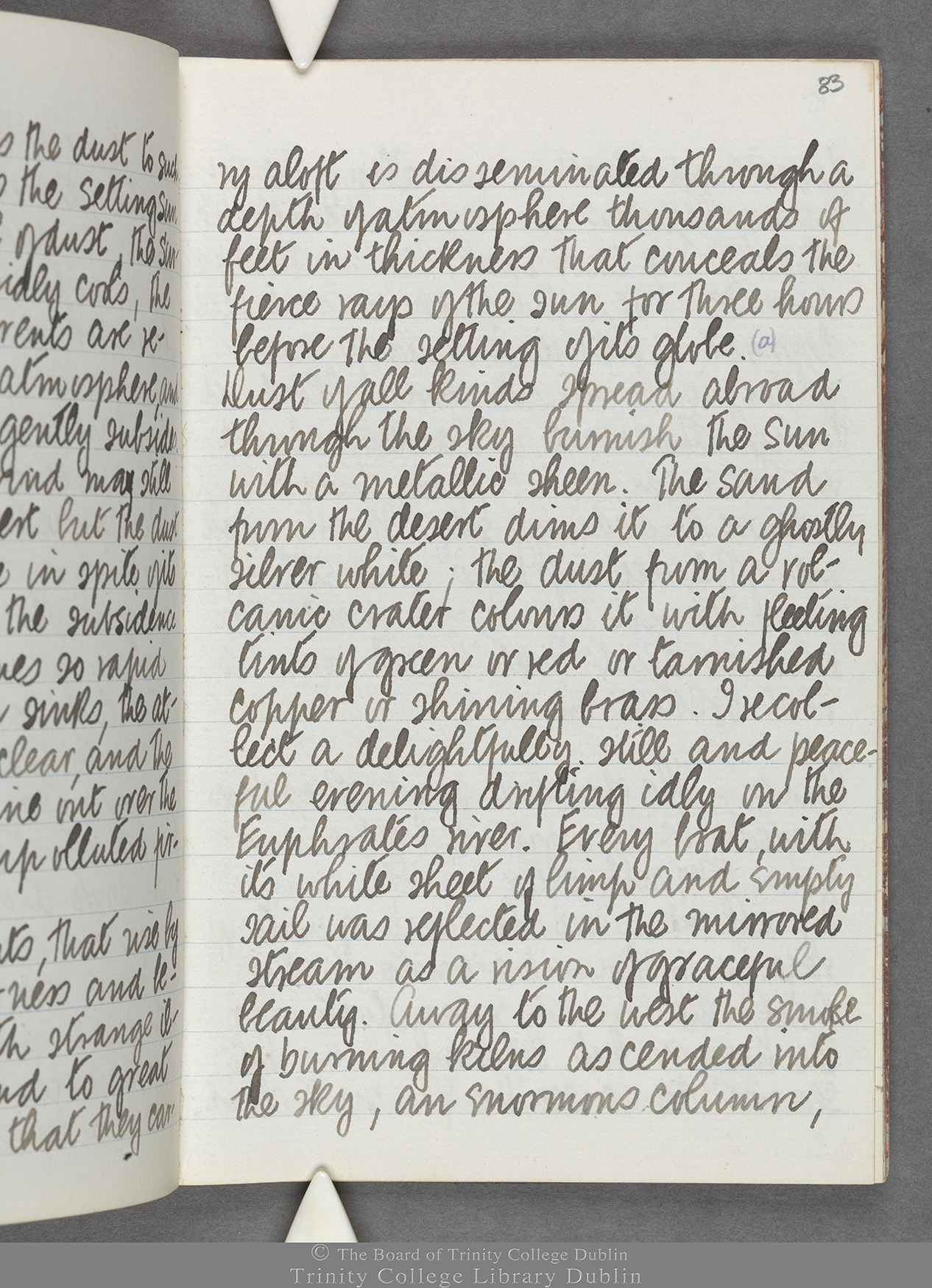[12th October 1916] Ur of the Chaldees.
The following notes may supplement the previous description, being inserted in places marked by a corresponding number.
(1). – or rather as modern authorities would infer, – Abraham, at the head of his Semite tribe
(2). Shallow graves were exposed, “dish-cover coffins” broken, human bones scattered about. Close to the graves were remnants of the earthenware pipes which the Chaldeans used to drain their sepulchral mounds.
(3). The slabs were of the finest quality equalling the best of modern bricks and vastly superior to those with which the modern Arab town is built. They were of various hues, shapes and sizes; the largest measuring 13×13 inches. The tenacity of the cementing bitumen was improved
